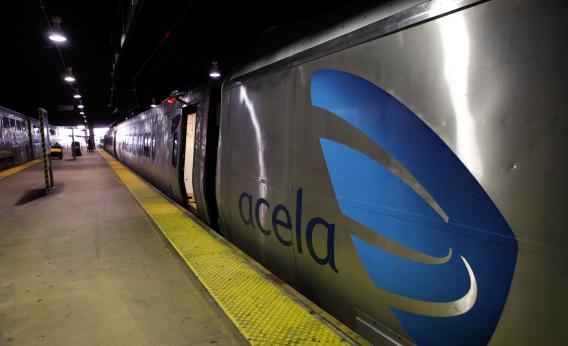Adam Davidson has a fun piece on what you can learn by looking out the window of your train as you ride from New York to Washington. I do worry, however, that focusing on the pockets of industrial decline in the Northeast corridor obscures the national context. There are certainly poor people here in Washington, struggling families in New Jersey, difficult sections of Philadelphia, and even in glitzy New York, many people having a hard time getting by in public housing. But on the whole this is a very prosperous section of the country, and when you combine its wealth and its size, it’s one of the most economically successful regions in the world.
Click over to ye olde Brookings State of Metropolitan American map and you’ll see that Davidson’s journey started in the New York metropolitan statistical area, which has the 13th highest median income out of America’s 100 largest MSAs. The Philadelphia/Camden, N.J./ Wilmington, Del., MSA clocks in at 18th. Then it’s down to Baltimore/Towson, Md. Baltimore City has a lot of problems—famously so thanks to The Wire—but the Baltimore area as a whole is doing great, ninth on the median household income list. The typical Baltimore-area household earns over 20 percent more money than the typical American household. Last but by no means least there’s Washington at No. 1.
And there’s more. Satellite cities of New York are even richer than the New York MSA. Poughkeepsie, N.Y., is No. 8; Connecticut’s Bridgeport/Stamford/Norwalk MSA is No. 3; and New Haven, Conn., is No. 22. Farther north, Hartford. Conn., is No. 11; Boston is No. 7; and Worcester, Mass., is No. 14. The Northeast’s laggard area is the Providence, R.I./New Bedford, Mass./Fall River, Mass., MSA that’s only 43rd in median household income with a number that’s only slightly above the national median. The Northeast corridor is so rich and successful, in other words, that Providence’s averageness looks like failure.
By comparison, the Texas Triangle is composed of the 30th (Austin), 33rd (Dallas), 34th (Houston), and 51st (San Antonio) highest income metro areas in the United States.
Which is hardly to say that the Northeast is perfect. But I think dwelling on its pockets of industrial decline misses the biggest story here. The real questions to ask are about the linked issues of why the cost of living is so high and the population growth so relatively low in this economically dynamic region. That speaks primarily to the suite of issues I wrote about in The Rent Is Too Damn High, along with the fact that this region’s transportation infrastructure is relatively rickety. But by and large this is a part of the country that’s done a great job of adapting to the post-industrial economy and providing high median incomes.
